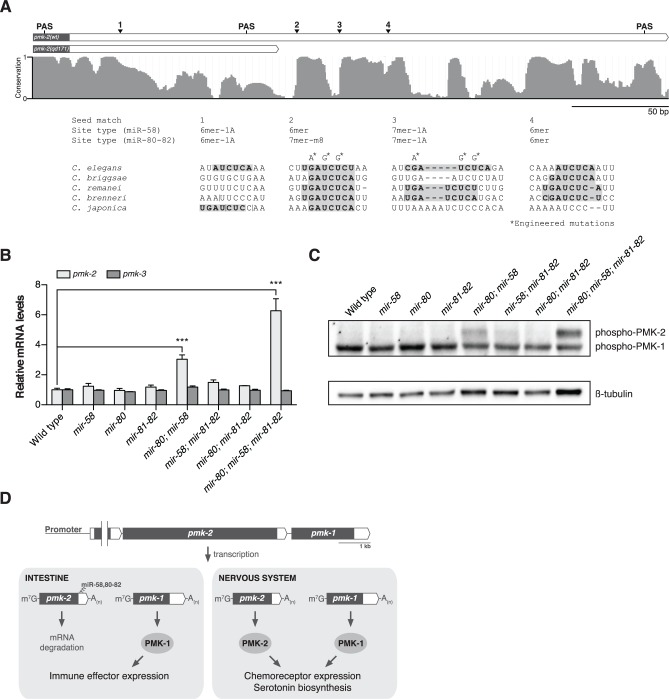Fig 4. The miR-58/80-82 family of microRNAs functions redundantly to restrict expression of PMK-2 to the nervous system.
(A) A schematic of the 3’UTR of pmk-2 mRNA in wild type and pmk-2(qd171) pmk-1(km25) mutant animals as determined by 3’ RACE analysis. Gray fill, exon; white fill, 3’UTR. Conservation of sequence among Caenorhabditis species by phastCons in shown [46]. miR-58/80-82 seed match sites are annotated. Vertical line, gap in alignment > 5 bp. Mutations engineered into the pmk operon translational reporter (Fig. 2C) are indicated. PAS, polyadenylation signal. (B) qRT-PCR analysis of pmk-2 and pmk-3 mRNA levels in L4 larval stage wild type worms and mir-58/80-82 family mutants. Levels of pmk-2 and pmk-3 mRNA are normalized to the levels of snb-1 mRNA. Values plotted are the fold changes relative to wild type. Shown is the mean ± SEM (n = 3 independent biological replicates, *** P<0.001, two-way ANOVA with Bonferroni post-test). (C) Immunoblot analysis of lysates from L4 larval stage wild type worms and mir-58/80-82 family mutants using antibodies that recognize activated p38 MAPK and β-tubulin. (D) A model for the function of the miR-58/80-82 family of microRNAs in defining the tissue-specific expression of PMK-2 p38 MAPK through the post-transcriptional destabilization of pmk-2 mRNA.

